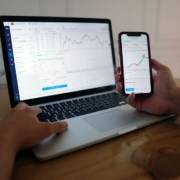Simulations and their Role in Developing Market Intuition
Financial market simulations have emerged as a crucial tool in developing an intuitive understanding of how markets behave. By immersing learners in a dynamic, interactive, and risk-free environment, simulations offer a practical and effective way to understand the intricate dynamics of financial markets. But how do these simulations work, and how can they aid in developing market intuition? Let’s delve into it.
Understanding Market Simulations
At their core, market simulations replicate real-world financial markets, allowing learners to engage with a variety of market conditions and scenarios1. These simulations encompass different financial instruments and market conditions, from equity and commodity instruments to bull and bear markets. They even recreate significant historical events like the 1998 LTCM Collapse or the 2007 Financial Collapse.
Simulations also adopt a global viewpoint, reflecting the interconnected nature of today’s financial markets. Thus, learners can experience how changes in one part of the world can influence markets elsewhere1.
Developing Market Intuition through Simulations
Simulations play a crucial role in developing market intuition in several ways:
Pattern Recognition: Simulations can help learners recognize patterns in market behavior over time. By interacting with simulations regularly, learners can start to identify trends, anticipate market movements, and develop strategies based on these patterns.
Understanding Market Dynamics: Simulations replicate the complex dynamics of financial markets, including the interactions between different financial instruments and the impact of macroeconomic events. By navigating these dynamics in a simulated environment, learners can gain a deeper understanding of how markets work, enhancing their market intuition.
Experimentation and Learning from Mistakes: One of the key benefits of simulations is the ability to experiment without real-world consequences. Learners can test various trading strategies, learn from their mistakes, and adjust their approach based on outcomes. This process of trial and error can greatly accelerate the development of market intuition.
Developing Risk Management Skills: Risk management is a critical part of trading, and simulations offer an excellent way to cultivate these skills. Learners can play the role of both trader and risk manager, gaining a holistic understanding of risk management in trading23.
Interactive Learning: Simulations provide an engaging and interactive learning experience.
This interactivity enhances understanding and retention, making it a valuable tool for developing market intuition2.
The Future of Market Simulations
As technology continues to advance, the capabilities of financial market simulations will continue to expand. Future simulations could incorporate artificial intelligence to create even more realistic market conditions or use virtual and augmented reality for an immersive learning experience.
Despite these future possibilities, the value of simulations in developing market intuition remains clear. They offer an unparalleled opportunity to understand and engage with market dynamics, paving the way for more intuitive and effective trading strategies. As such, they will continue to be a valuable tool for financial education and professional training.











